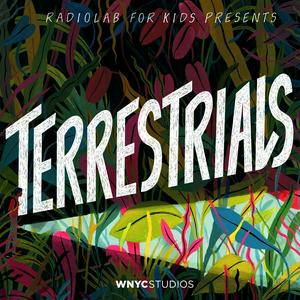On the outskirts of the Nevada desert, a young dog named Hades jumped his fence and ran away from home. His family lost hope, until one night, they saw Hades on the news. For almost seven months, he had been sleeping, eating and howling with a pack of coyotes.We usually view coyotes as vicious, bloodthirsty beasts. But turns out, they can be pretty friendly. They form unlikely alliances with other animals all the time. They’re so flexible they can eat almost anything and live everywhere from open prairies to city streets, where they lurk unseen like urban ghosts. Conservation scientist Christine Willkinson, or scrappy naturalist, tells us why a coyote’s scrappiness is its greatest superpower. In a world that rewards specialists, coyotes make a case for generalists - the ones not spectacular at any one thing, but just okay at everything. Plus, to find these ghosts in her own city, Lulu goes on an urban coyote hunt.Learn more about coyote friendships:Watch a video of a coyote eagerly waiting for its badger friend under a busy highway in the Santa Cruz mountains. (2020)Watch this video of a raccoon and coyote becoming best friends.Read about coyotes and ravens teaming up.Watch a coyote and bobcat befriending each other in Florida. (2015)Watch this unlikely friendship between a coyote and a cat. (Australia, 2019)Terrestrials was created by Lulu Miller with WNYC Studios. This episode was produced by Ana González, Alan Goffinski, Mira Burt-Wintonick, Joe Plourde, Lulu Miller, and Sarah Sandbach, with help from Tanya Chawla and Natalia Ramirez. Fact checking was by Natalie Middleton. Our advisors this season are Ana Luz Porzecanski, Anil Lewis, Dominique Shabazz, and Liza Demby.Support for Terrestrials also comes from the Simons Foundation, the Arthur Vining Davis Foundations, and the John Templeton Foundation.
HEY GROWN-UPS!Love the show? Leave us a ⭐⭐⭐⭐⭐ rating and review on your podcast app—it helps curious listeners find us!We want to hear from you! Share your thoughts about Terrestrials with us.Subscribe to our weekly newsletter for bite-sized essays, activities, and ways to connect with the show.Follow us on YouTube, Instagram, and TikTok for behind-the-scenes extras and more.Listen to original music from Terrestrials on Spotify, Apple Music, or our music page.Got a badgering question for the team? Email us at
[email protected] or submit a voice memo with your name, age, and your question using this form!Terrestrials is made possible in part by listeners like you. Support the show by joining Radiolab’s membership program, The Lab—and we’ll send you a special thank-you gift from our team!
